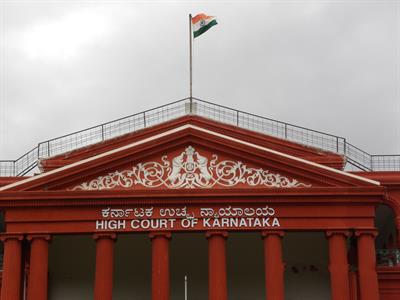
PUMPA - SMART LEARNING
எங்கள் ஆசிரியர்களுடன் 1-ஆன்-1 ஆலோசனை நேரத்தைப் பெறுங்கள். டாப்பர் ஆவதற்கு நாங்கள் பயிற்சி அளிப்போம்
Book Free DemoHigh Courts:
The origin of the Institution of High Courts can be traced to \(1862\), as the high courts were established in the Presidencies of Madras, Calcutta and Bombay. Later in \(1866\), a new high court in Allahabad came into existence.

High Court of Karnataka
The Indian Constitution had given separate provisions for the High Court, Part VI, which has Articles from \(214\) to \(231\) that deals with the powers of the High Court.
Allahabad: The High Court located in Allahabad, Uttar Pradesh, is the largest High Court in India.
Functions of the High Court:
The Constitution allows for the establishment of High Courts in every state except for some Union Territories. Considered as the highest court of appeal in the state it has its jurisdiction over the District and Subordinate courts.
The Parliament of India has the power to extend the jurisdiction of the High Court over any Union Territory or exclude the power.
\(7th\ \)amendment act: The Seventh Amendment act was enacted in the year \(1956\), which authorised the Parliament to establish a common high court for two or more states.
Jurisdictions of the High Court:
The High Courts are tasked with hearing appeals with lower courts, and also it has its jurisdictions, namely the Original, Writ, Appellate, and Supervisory Jurisdictions. They are explained below.
Original Jurisdiction: The Original Jurisdiction of the High Court extends to civil matters of the State.
Writ Jurisdiction: The High Court is empowered to issue writs to all matters under its jurisdictions and not only for the issues related to Fundamental rights.
Appellate Jurisdiction: Being the highest court of appeal in the state it adjudicates both civil and criminal matters of the State.
Reference:
High Court of Karnataka: ManeeshUpadhyay / Shutterstock